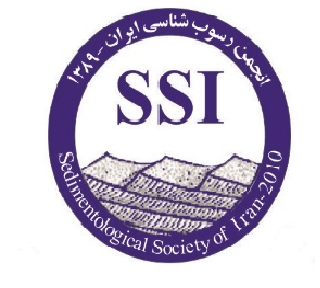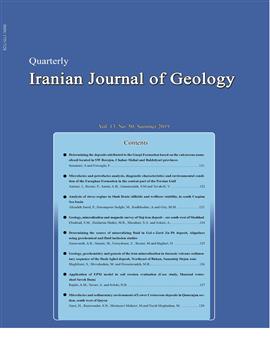Geology, mineralization and magnetic survey of Staj iron deposit – ore south west of Mashhad
Subject Areas :
Keywords: Mineralization Goethite Magnetite HydrothermalAnomalies .,
Abstract :
Estaj iron deposit (EID) is located 40 km south of Mashhad. Rock units in the area include sandstone and quartzite (Cambrian), limestone (Devonian), micaschist (Silurian) and gabbro diorite. Hematite iron mineralization occured in the schist and limestone host rocks and sporadically in quartzite. Mineralization accomplished in two stages, of hypogene (including primary minerals of hematite, pyrite, and magnetite) and oxidized (including minerals, of goethite, hematite and limonite). Ground magnetic survey over main outcrop of hematite iron mineralization was carried out to investigate magnetite mineralization at depth. Magnetic maps show anomalies A and B over the main mineralization and C, D and E over the intrusive body. Small amount of mineralization is roughly cropped out along a fault with an east-west trend, coinciding with the anomalies C, D and E. Magnetic susceptibility of surface samples of intrusive body and host quartzite (〖42×10〗^(-5) SI and 〖 0×10〗^(-5) SI respectivly) is low. Consequently the main source of anomalies at the location of main mineralization (with suseptibility of 〖 8-2939×10〗^(-5) SI) is probably magnetite. In the location of intrusive body the source is either magnetite or the intrusive, body which has higher magnetite suseptibility at depth. The latter point should be verified by drilling.

